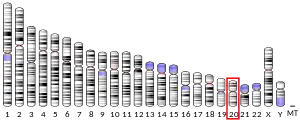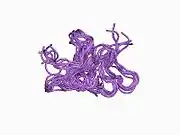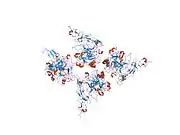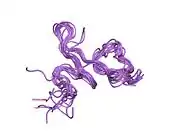| THBD | |||||||||||||||||||||||||||||||||||||||||||||||||||
|---|---|---|---|---|---|---|---|---|---|---|---|---|---|---|---|---|---|---|---|---|---|---|---|---|---|---|---|---|---|---|---|---|---|---|---|---|---|---|---|---|---|---|---|---|---|---|---|---|---|---|---|
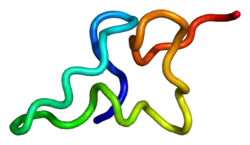 | |||||||||||||||||||||||||||||||||||||||||||||||||||
| |||||||||||||||||||||||||||||||||||||||||||||||||||
| Identifiers | |||||||||||||||||||||||||||||||||||||||||||||||||||
| Aliases | THBD, AHUS6, BDCA3, CD141, THPH12, THRM, TM, thrombomodulin, BDCA-3 | ||||||||||||||||||||||||||||||||||||||||||||||||||
| External IDs | OMIM: 188040 MGI: 98736 HomoloGene: 308 GeneCards: THBD | ||||||||||||||||||||||||||||||||||||||||||||||||||
| |||||||||||||||||||||||||||||||||||||||||||||||||||
| |||||||||||||||||||||||||||||||||||||||||||||||||||
| |||||||||||||||||||||||||||||||||||||||||||||||||||
| |||||||||||||||||||||||||||||||||||||||||||||||||||
| |||||||||||||||||||||||||||||||||||||||||||||||||||
| Wikidata | |||||||||||||||||||||||||||||||||||||||||||||||||||
| |||||||||||||||||||||||||||||||||||||||||||||||||||
Thrombomodulin (TM), CD141 or BDCA-3 is an integral membrane protein expressed on the surface of endothelial cells and serves as a cofactor for thrombin. It reduces blood coagulation by converting thrombin to an anticoagulant enzyme from a procoagulant enzyme.[5] Thrombomodulin is also expressed on human mesothelial cell,[6] monocyte and a dendritic cell subset.
Genetics and structure
In humans, thrombomodulin is encoded by the THBD gene.[7] The protein has a molecular mass of 74kDa, and consists of a single chain with six tandemly repeated EGF-like domains, a Serine/Threonine-rich spacer and a transmembrane domain.[8] It is a member of the C-type lectin domain (CTLD) group 14 family.[9]
Function
Thrombomodulin functions as a cofactor in the thrombin-induced activation of protein C in the anticoagulant pathway by forming a 1:1 stoichiometric complex with thrombin. This raises the speed of protein C activation thousandfold. Thrombomodulin-bound thrombin has procoagulant effect at the same time by inhibiting fibrinolysis by cleaving thrombin-activatable fibrinolysis inhibitor (TAFI, aka carboxypeptidase B2) into its active form.
Thrombomodulin is a glycoprotein on the surface of endothelial cells that, in addition to binding thrombin, regulates C3b inactivation by factor I. Mutations in the thrombomodulin gene (THBD) have also been reported to be associated with atypical hemolytic-uremic syndrome (aHUS).[10]
The antigen described as BDCA-3[11] has turned out to be identical to thrombomodulin.[12] Thus, it was revealed that this molecule also occurs on a very rare (0.02%) subset of human dendritic cells called MDC2. Its function on these cells is unknown.
Interactions
Thrombomodulin has been shown to interact with thrombin.[13][14]
References
- 1 2 3 GRCh38: Ensembl release 89: ENSG00000178726 - Ensembl, May 2017
- 1 2 3 GRCm38: Ensembl release 89: ENSMUSG00000074743 - Ensembl, May 2017
- ↑ "Human PubMed Reference:". National Center for Biotechnology Information, U.S. National Library of Medicine.
- ↑ "Mouse PubMed Reference:". National Center for Biotechnology Information, U.S. National Library of Medicine.
- ↑ IPR001491 Thrombomodulin Accessed January 19, 2012.
- ↑ Verhagen HJ, Heijnen-Snyder GJ, Pronk A, Vroom TM, van Vroonhoven TJ, Eikelboom BC, et al. (December 1996). "Thrombomodulin activity on mesothelial cells: perspectives for mesothelial cells as an alternative for endothelial cells for cell seeding on vascular grafts". British Journal of Haematology. 95 (3): 542–549. doi:10.1046/j.1365-2141.1996.d01-1935.x. PMID 8943899. S2CID 8417511.
- ↑ Wen DZ, Dittman WA, Ye RD, Deaven LL, Majerus PW, Sadler JE (July 1987). "Human thrombomodulin: complete cDNA sequence and chromosome localization of the gene". Biochemistry. 26 (14): 4350–4357. doi:10.1021/bi00388a025. PMID 2822087.
- ↑ Sadler JE (July 1997). "Thrombomodulin structure and function". Thrombosis and Haemostasis. 78 (1): 392–395. doi:10.1055/s-0038-1657558. PMID 9198185. S2CID 32297505.
- ↑ Khan KA, McMurray JL, Mohammed F, Bicknell R (September 2019). "C-type lectin domain group 14 proteins in vascular biology, cancer and inflammation". The FEBS Journal. 286 (17): 3299–3332. doi:10.1111/febs.14985. PMC 6852297. PMID 31287944.
- ↑ Delvaeye M, Noris M, De Vriese A, Esmon CT, Esmon NL, Ferrell G, et al. (July 2009). "Thrombomodulin mutations in atypical hemolytic-uremic syndrome". The New England Journal of Medicine. 361 (4): 345–357. doi:10.1056/NEJMoa0810739. PMC 3530919. PMID 19625716.
- ↑ Dzionek A, Fuchs A, Schmidt P, Cremer S, Zysk M, Miltenyi S, et al. (December 2000). "BDCA-2, BDCA-3, and BDCA-4: three markers for distinct subsets of dendritic cells in human peripheral blood". Journal of Immunology. 165 (11): 6037–6046. doi:10.4049/jimmunol.165.11.6037. PMID 11086035.
- ↑ Dzionek A, Inagaki Y, Okawa K, Nagafune J, Röck J, Sohma Y, et al. (December 2002). "Plasmacytoid dendritic cells: from specific surface markers to specific cellular functions". Human Immunology. 63 (12): 1133–1148. doi:10.1016/S0198-8859(02)00752-8. PMID 12480257.
- ↑ Bajzar L, Morser J, Nesheim M (July 1996). "TAFI, or plasma procarboxypeptidase B, couples the coagulation and fibrinolytic cascades through the thrombin-thrombomodulin complex". The Journal of Biological Chemistry. 271 (28): 16603–16608. doi:10.1074/jbc.271.28.16603. PMID 8663147.
- ↑ Jakubowski HV, Owen WG (July 1989). "Macromolecular specificity determinants on thrombin for fibrinogen and thrombomodulin". The Journal of Biological Chemistry. 264 (19): 11117–11121. doi:10.1016/S0021-9258(18)60437-5. PMID 2544585.
Further reading
- Esmon CT (July 1995). "Thrombomodulin as a model of molecular mechanisms that modulate protease specificity and function at the vessel surface". FASEB Journal. 9 (10): 946–955. doi:10.1096/fasebj.9.10.7615164. PMID 7615164. S2CID 19565674.
- Ohlin AK, Norlund L, Marlar RA (July 1997). "Thrombomodulin gene variations and thromboembolic disease". Thrombosis and Haemostasis. 78 (1): 396–400. doi:10.1055/s-0038-1657559. PMID 9198186. S2CID 25122238.
- Van de Wouwer M, Collen D, Conway EM (August 2004). "Thrombomodulin-protein C-EPCR system: integrated to regulate coagulation and inflammation". Arteriosclerosis, Thrombosis, and Vascular Biology. 24 (8): 1374–1383. doi:10.1161/01.ATV.0000134298.25489.92. PMID 15178554.
- Boffa MC, Jackman RW, Peyri N, Boffa JF, George B (1991). "Thrombomodulin in the central nervous system". Nouvelle Revue Française d'Hématologie. 33 (6): 423–429. PMID 1667949.
- Jackman RW, Beeler DL, Fritze L, Soff G, Rosenberg RD (September 1987). "Human thrombomodulin gene is intron depleted: nucleic acid sequences of the cDNA and gene predict protein structure and suggest sites of regulatory control". Proceedings of the National Academy of Sciences of the United States of America. 84 (18): 6425–6429. Bibcode:1987PNAS...84.6425J. doi:10.1073/pnas.84.18.6425. PMC 299089. PMID 2819876.
- Suzuki K, Kusumoto H, Deyashiki Y, Nishioka J, Maruyama I, Zushi M, et al. (July 1987). "Structure and expression of human thrombomodulin, a thrombin receptor on endothelium acting as a cofactor for protein C activation". The EMBO Journal. 6 (7): 1891–1897. doi:10.1002/j.1460-2075.1987.tb02448.x. PMC 553573. PMID 2820710.
- Wen DZ, Dittman WA, Ye RD, Deaven LL, Majerus PW, Sadler JE (July 1987). "Human thrombomodulin: complete cDNA sequence and chromosome localization of the gene". Biochemistry. 26 (14): 4350–4357. doi:10.1021/bi00388a025. PMID 2822087.
- Shirai T, Shiojiri S, Ito H, Yamamoto S, Kusumoto H, Deyashiki Y, et al. (February 1988). "Gene structure of human thrombomodulin, a cofactor for thrombin-catalyzed activation of protein C". Journal of Biochemistry. 103 (2): 281–285. CiteSeerX 10.1.1.1006.6759. doi:10.1093/oxfordjournals.jbchem.a122261. PMID 2836377.
- Yonezawa S, Maruyama I, Tanaka S, Nakamura T, Sato E (August 1988). "Immunohistochemical localization of thrombomodulin in chorionic diseases of the uterus and choriocarcinoma of the stomach. A comparative study with the distribution of human chorionic gonadotropin". Cancer. 62 (3): 569–576. doi:10.1002/1097-0142(19880801)62:3<569::AID-CNCR2820620322>3.0.CO;2-T. PMID 2839283. S2CID 28744944.
- Ishii H, Majerus PW (December 1985). "Thrombomodulin is present in human plasma and urine". The Journal of Clinical Investigation. 76 (6): 2178–2181. doi:10.1172/JCI112225. PMC 424339. PMID 3001144.
- Adler M, Seto MH, Nitecki DE, Lin JH, Light DR, Morser J (October 1995). "The structure of a 19-residue fragment from the C-loop of the fourth epidermal growth factor-like domain of thrombomodulin". The Journal of Biological Chemistry. 270 (40): 23366–23372. doi:10.1074/jbc.270.40.23366. PMID 7559494.
- Ohlin AK, Marlar RA (January 1995). "The first mutation identified in the thrombomodulin gene in a 45-year-old man presenting with thromboembolic disease". Blood. 85 (2): 330–336. doi:10.1182/blood.V85.2.330.330. PMID 7811989.
- Srinivasan J, Hu S, Hrabal R, Zhu Y, Komives EA, Ni F (November 1994). "Thrombin-bound structure of an EGF subdomain from human thrombomodulin determined by transferred nuclear Overhauser effects". Biochemistry. 33 (46): 13553–13560. doi:10.1021/bi00250a007. PMID 7947766.
- Gerlitz B, Hassell T, Vlahos CJ, Parkinson JF, Bang NU, Grinnell BW (October 1993). "Identification of the predominant glycosaminoglycan-attachment site in soluble recombinant human thrombomodulin: potential regulation of functionality by glycosyltransferase competition for serine474". The Biochemical Journal. 295 (1): 131–140. doi:10.1042/bj2950131. PMC 1134829. PMID 8216207.
- Yasuda K, Espinosa R, Davis EM, Le Beau MM, Bell GI (September 1993). "Human somatostatin receptor genes: localization of SSTR5 to human chromosome 20p11.2". Genomics. 17 (3): 785–786. doi:10.1006/geno.1993.1410. PMID 8244401.
- Yamamoto S, Mizoguchi T, Tamaki T, Ohkuchi M, Kimura S, Aoki N (April 1993). "Urinary thrombomodulin, its isolation and characterization". Journal of Biochemistry. 113 (4): 433–440. doi:10.1093/oxfordjournals.jbchem.a124063. PMID 8390446.
- Meininger DP, Hunter MJ, Komives EA (September 1995). "Synthesis, activity, and preliminary structure of the fourth EGF-like domain of thrombomodulin". Protein Science. 4 (9): 1683–1695. doi:10.1002/pro.5560040904. PMC 2143218. PMID 8528067.
- Maglott DR, Feldblyum TV, Durkin AS, Nierman WC (May 1996). "Radiation hybrid mapping of SNAP, PCSK2, and THBD (human chromosome 20p)". Mammalian Genome. 7 (5): 400–401. doi:10.1007/s003359900120. PMID 8661740. S2CID 34951074.
